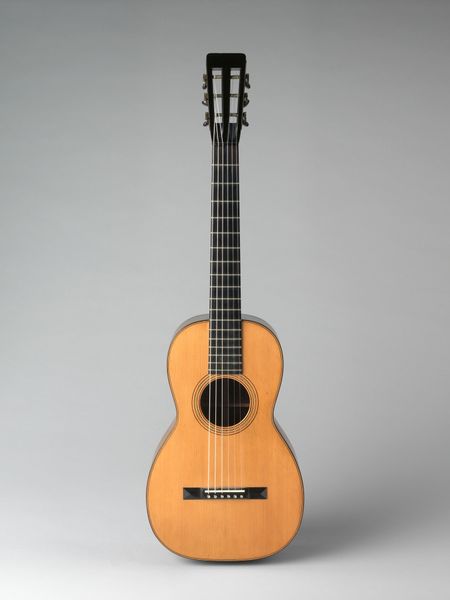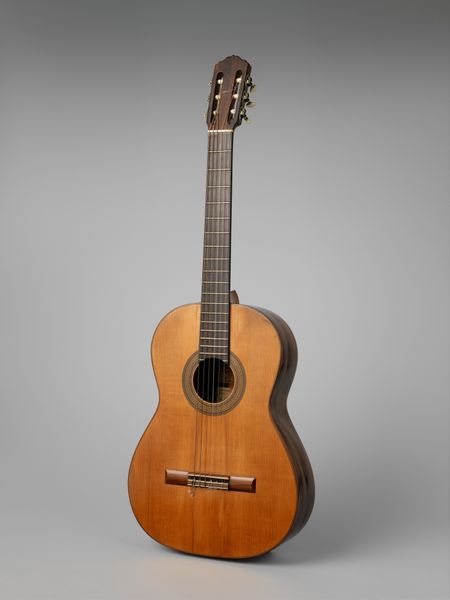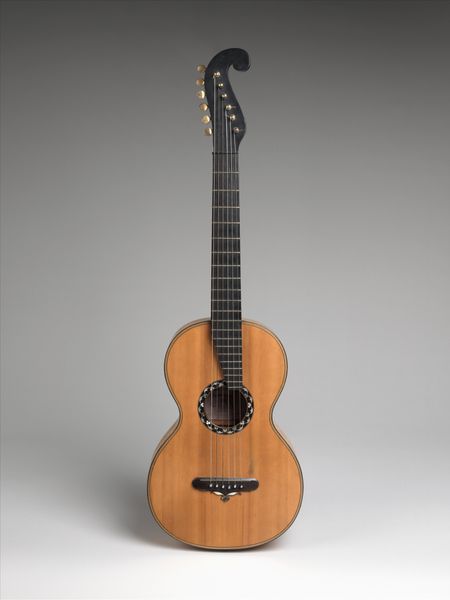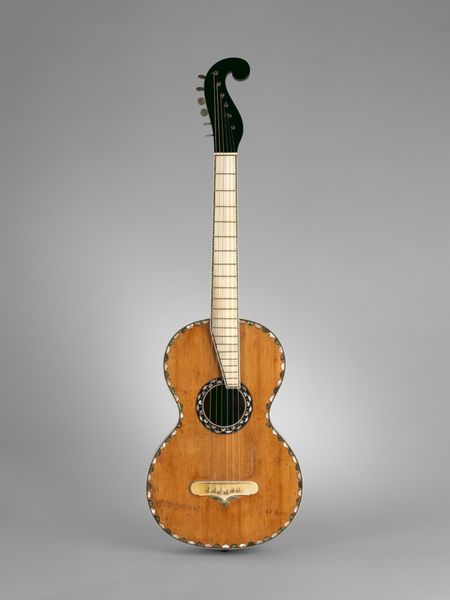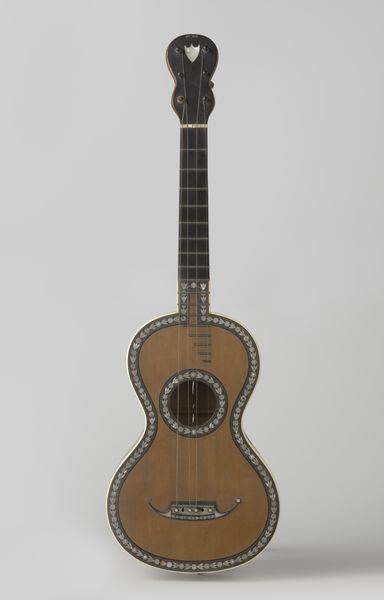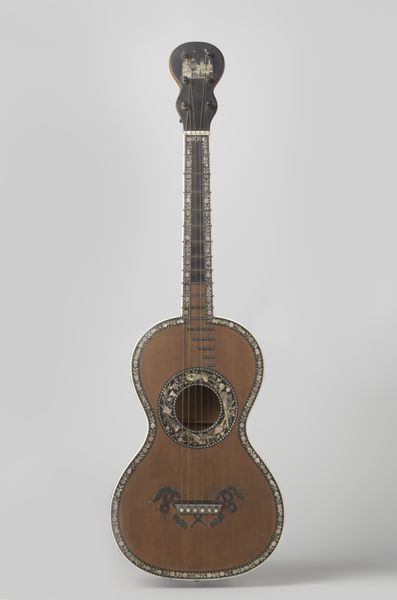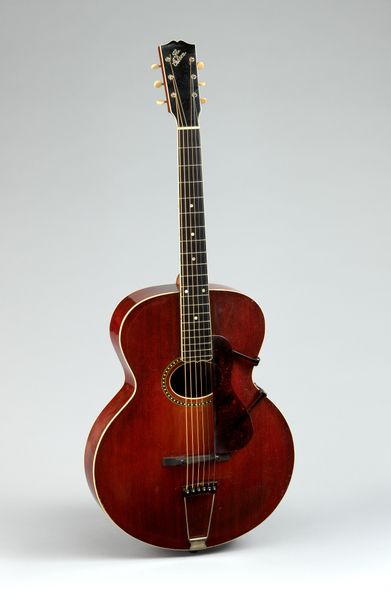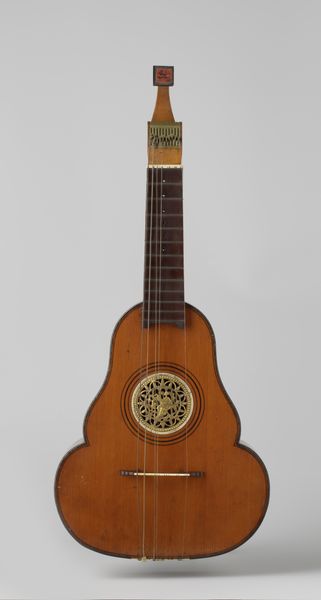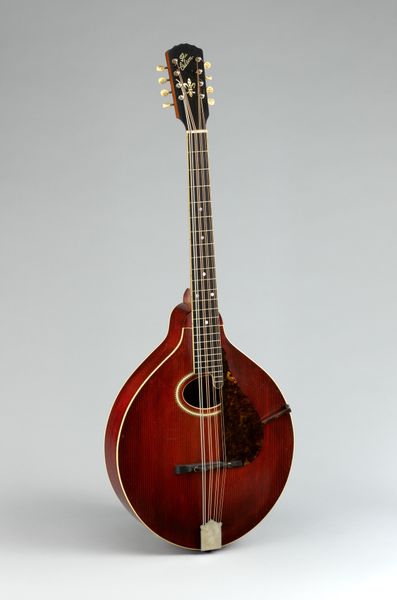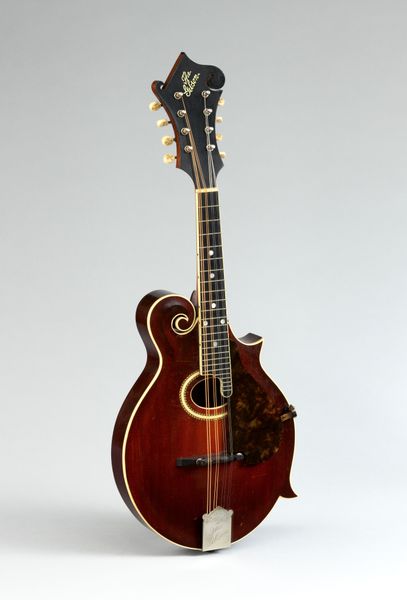
wood
#
classical-realism
#
wood
#
musical-instrument
Dimensions: Total Length: 924 mm
Copyright: Public Domain
Editor: We’re looking at a guitar, made sometime between 1800 and 1850 by Pierre-René Lacôte. It’s currently held at the Metropolitan Museum of Art, and made of wood. I find it to be so elegant. What significance do you find in this seemingly simple instrument? Curator: It’s remarkable, isn’t it? Look at the wood; imagine the tree it came from, the earth that nourished it. And then, consider the hands that shaped it. In the 19th century, the guitar transcended simple accompaniment, didn’t it? Composers began treating it as a serious solo instrument, echoing the romanticism of the era. What kind of symbolic role would you expect it played within musical culture at this time? Editor: Well, I imagine the rise of classical guitar parallels growing nationalism and artistic freedom of expression. Curator: Precisely! The guitar offered a distinct, intimate voice against the grandeur of the orchestra. Consider how this object may have sat in the hands of someone pouring their emotion through each note. The guitar becomes an extension of their soul. Think about the imagery often paired with it—moonlit serenades, secret passions, folk traditions being validated as worthwhile. Doesn’t this specific instrument have that quiet, poetic power to recall lost love? Editor: That makes sense. It's a vessel, in a way. Curator: Yes, a vessel filled with both individual emotion and collective cultural memory. We aren't simply looking at an object, but the embodiment of shared human experiences and desires woven into its very form. The sounds, real and imagined, still reverberate. Editor: That’s such a beautiful way to look at it; I hadn’t thought of it that way. It feels like I’m hearing music simply by observing it. Curator: Exactly. The echo lingers.
Comments
No comments
Be the first to comment and join the conversation on the ultimate creative platform.
